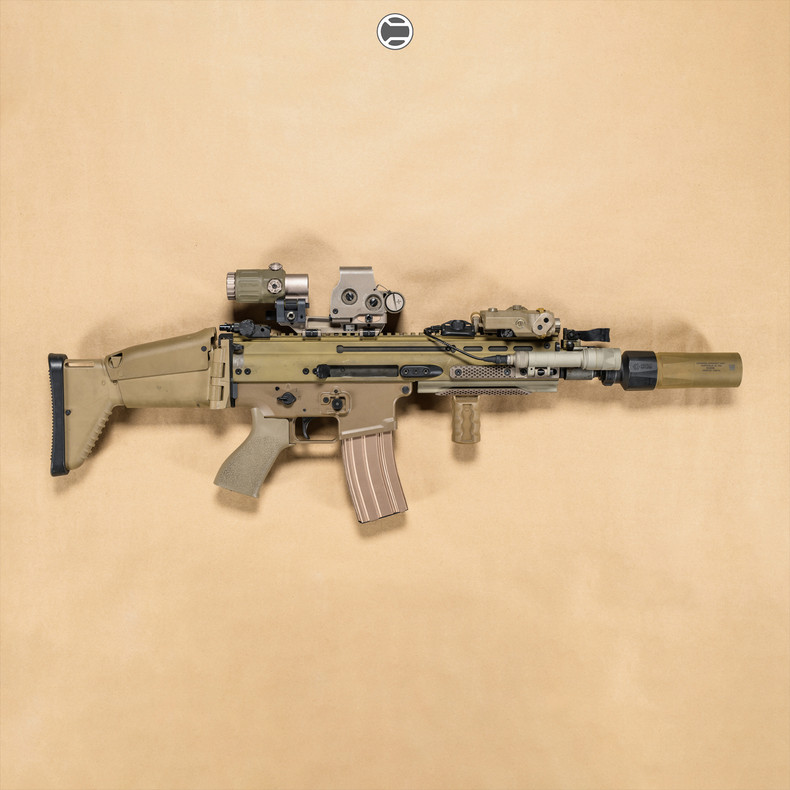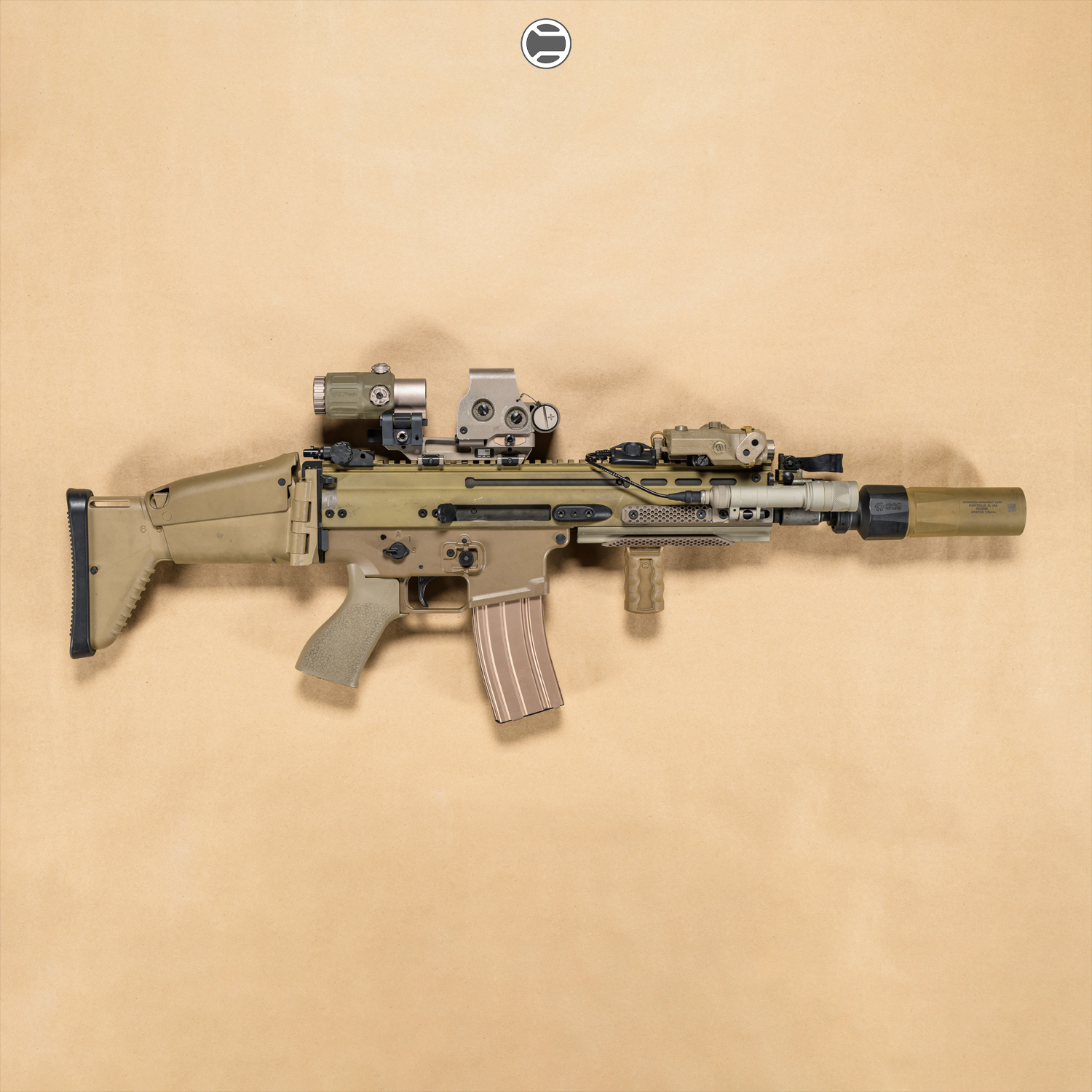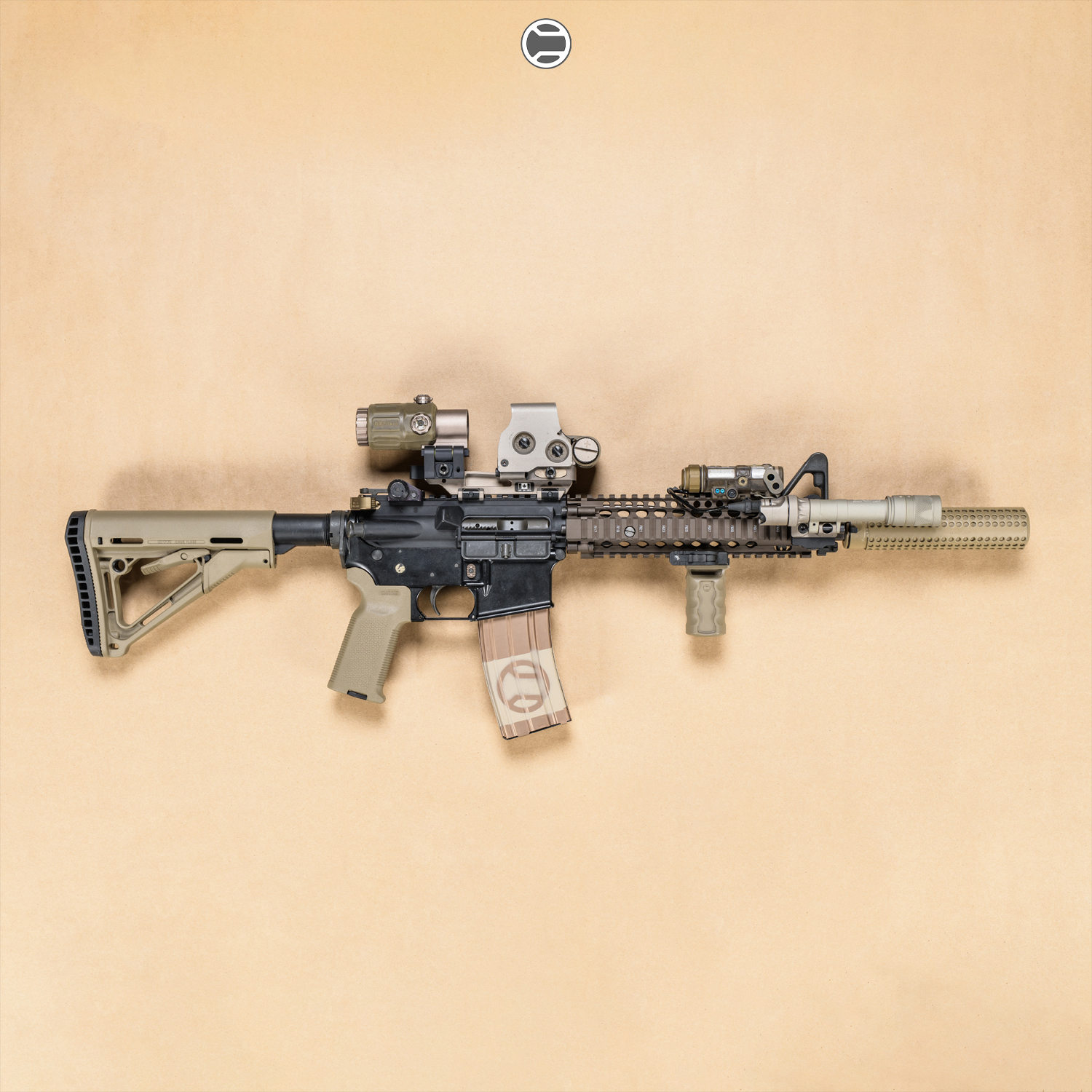
For a group with a very singular common interest, there sure is a lot of division within the firearm community about every little option: ARs or AKs? Glocks or 1911s? Even within these debates, there are sub-debates, weighing the merits of individual pieces and the effects they have on performance, maintenance, and the litany of “what-if” scenarios we love to put ourselves through.
So it only makes sense that the latest debate within the AR-15 community is about the proliferation of polymer parts on the market. From M-LOK accessories to butt stocks and nearly everything in between, part manufacturers are making more and more rifle pieces out of polymer. At RailScales, we play it safe and have AR parts and accessories available in both polymer, metal, and even premium materials like G10. But which is the right choice for your next build? Let’s take a look at both options.
A Quick Overview of Polymer vs Aluminum
Both materials have their merits and their faults. If you’re new to the debate, it’s important to have a general understanding of what the pros and cons are. Let’s take a look at our two contenders:
Aluminum Receivers
Since the original designs, the AR platform has always had an aluminum receiver. The metal is durable in spite of its relatively light weight, which has helped it excel in its role as a standard combat weapon for American soldiers around the world.
There’s no real need to question the effectiveness of an aluminum AR receiver as it has proven itself on the battlefield and in our home use for over 50 years. With more manufacturers offering up 80% finished lower receivers, at-home gunsmiths can now complete their own receivers with just a little work. This opens up a lot of opportunities for customization. It also allows for some to cut away extra material in order to make their receiver even lighter.
Polymer Receivers
The use of polymers in rifles started in the middle of the 20th century. Indeed, the original AR-15 design was remarkable because of just how much plastic was on the rifle. Other firearm designs have centered around the use of polymer, the most famous probably being the Glock.
Modern plastic and polymers are surprisingly robust and can take a real beating, and don’t rust like metal firearm parts do if not upkept properly. It’s why more recent weapon platforms like the FN SCAR and the Remington ACR were built around polymer frames and assemblies. Metal components are used in strategic, high-use areas.
The Points of Argument - Aluminum vs Polymer
Like all debates, there’s no one main argument. In fact, the debate between polymer and aluminum receivers is quite nuanced. Now that we have a brief understanding of the two materials, we can fully immerse ourselves in the debate.
Cost
There’s no denying that, in the firearm community, it pays to be a penny pincher. After all, every dollar you save on equipment, parts, and gear is another dollar you can invest in more ammo and range time. That makes cost one of the driving factors of this debate.
The reality is that both options are incredibly affordable. Given that there are so many AR manufacturers out there, the market is now flush with top-shelf options at bottom-shelf prices. These days an 80% finished lower receiver can be found for under $100. Even if you take this receiver to a local gunsmith to finish, you’ll likely come in under $200 to have a completely finished and ready to go receiver. Similarly, you can purchase an unfinished polymer receiver with the necessary jig and tools to finish it for under $100.
This makes polymer receivers a more cost-effective option for some, but not by enough to be noteworthy in most cases. While this might be the deciding factor for some, others are looking at what they get for that cost rather than just the dollar signs themselves.
Assembly
We all love the simplicity of buying and building AR-15 rifles. Many have compared them to LEGO sets for adults, and we’d be hard-pressed to find a more apt comparison. Most parts can be simply swapped out without any need for fitting or lapping.
That said, putting together an unfinished lower isn’t always easy, and requires you to put in some work to get your receiver range-ready.
When you use the proper jig to finish your receiver, along with the right tools, you’ll quickly find that cutting away and finishing polymer is a much easier task than finishing a metal lower receiver. That being said, the softer material in your polymer receiver also means that small errors have bigger impacts. An errant cut with a Dremel on a polymer receiver could render the part unusable. Metal receivers are a little more forgiving, as their tolerances are much higher, and the metal can be ground and smoothed.
For those with the right tools and know-how, finishing an aluminum receiver is the obvious choice. Of course, if you’re lacking in specialized tools and don’t feel confident in shaping metal, a polymer receiver might make for a better option.
Weight
In the AR-15 community, we’re all in pursuit of “high-speed, low-drag.” We want our rifles and gear to be ready for action at any moment, and a big part of that means an emphasis on sleeker and lighter weight equipment. The world of ultralight ARs is expanding every day, in large part thanks to tighter tolerances on manufacturing machinery, and the growing popularity of polymers.
There’s an obvious winner in this category. Polymer parts will nearly always weigh less than their metal counterparts, receivers especially. The average polymer receiver weighs around one pound, while aluminum receivers weigh about twice that. When you install the necessary parts within the lower, those weights increase, naturally, but a whole pound of difference is noticeable no matter what.
With aluminum receivers, you can save more weight by trimming away certain parts of the receiver, like the magazine well, but this does raise some concerns about the integrity of the parts at that point.
Reliability
Reliability is probably the only part of this debate that would ever outweigh overall cost. There is more than a healthy dose of skepticism about the reliability and performance of polymer lowers. For instance, critics will loudy go on about anecdotal reports of polymer receivers exploding after just a handful of rounds at the range.
Many polymer receiver manufacturers are more than aware of the limits of the material and reinforce specific sections with metal or thicker polymer in order to maintain durability and performance. For instance, mag wells and the threaded area for the buffer tube can flex and warp when parts are screwed into place or set there.
Aluminum receivers are going to withstand wear and tear better than their polymer equivalents will. They have higher melting points, don’t warp or flex under pressure, and can be dropped without fear of cracks or chipping.
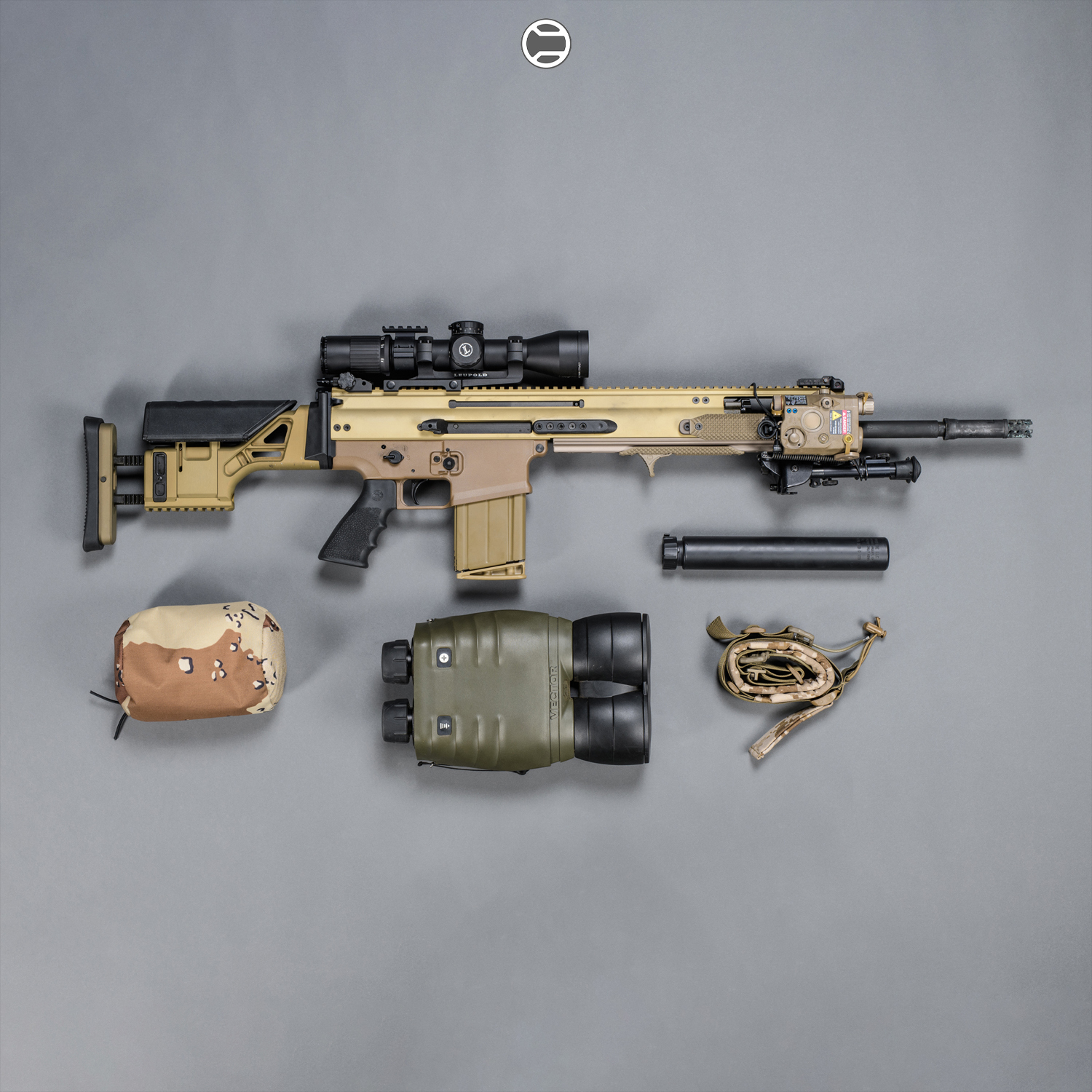
So Which is Right for Your Needs?
It might sound like a cop-out answer, but it really depends. For those who are looking for a rifle that doesn’t compromise in its weight-saving measures, polymer is the obvious answer. The lower cost of a polymer receiver and the fact that it can be finished using simple hand tools make it an extremely attractive option for those on a budget. Of course, an aluminum receiver may last significantly longer, meaning that you save money in the long run. For those who prioritize reliability, the aluminum option is proven and confidence-inspiring.
You’ll need to decide which better suits your needs before making a purchase. No matter which side you support in this debate, you’re ultimately the winner, as you’ll have a host of high-quality AR parts to choose from.
Order Your AR Parts and Accessories from RailScales
We’ve created a line of AR-15 accessories, handstops, grips, and more from some of the leading materials in the firearm industry. Products like our Karve handstop are offered in both polymer and metal options, and many of our unique rail covers are too. Find the right gear for your AR rail system and order from RailScales today!
FAQ: Polymer vs. Aluminum in AR Builds + RailScales Fitment
Q: Are polymer AR-15 lowers safe for range or defensive use?
A: For casual range use and lightweight builds, yes—modern polymer lowers are far more durable than many give credit for. That said, if you’re building a rifle for hard-duty, high-round count use, aluminum remains the proven, go-to material due to its rigidity, higher heat tolerance, and impact resistance.
Q: What are some of the most common failure points in polymer receivers?
A: Threaded buffer tube extensions and magazine wells. These areas can warp or crack under stress if not reinforced with steel or thicker polymer. Always vet the manufacturer’s design—some do integrate these reinforcements smartly.
Q: What RailScales products are available in both aluminum and polymer?
A: Both the Karve and RSB/M handstops/vertical grips come in aluminum, and polymer variants. This lets users build with their preferred weight and material profile without compromising on design or ergonomics.
Q: Will polymer accessories wear faster when mounted on aluminum rails?
A: In high-use rifles with frequent mounting/dismounting, polymer can show wear faster at stress points. However, properly mounted polymer accessories hold up well for most shooters—especially when the product is designed with tight tolerances like those from RailScales.
Q: Is there a noticeable difference in feel or grip between RailScales’ G10 and polymer panels?
A: Yes. G10 panels like the XOS-H and G10 Solos offer superior heat shielding and texture retention, especially under sustained fire. Polymer variants of these panels still provide excellent grip but are often chosen for weight savings or lower cost builds.
More from RailScales: Matching Material to Mission
At RailScales, we understand the balance between weight, cost, and durability better than most—and we’ve built our product line accordingly:
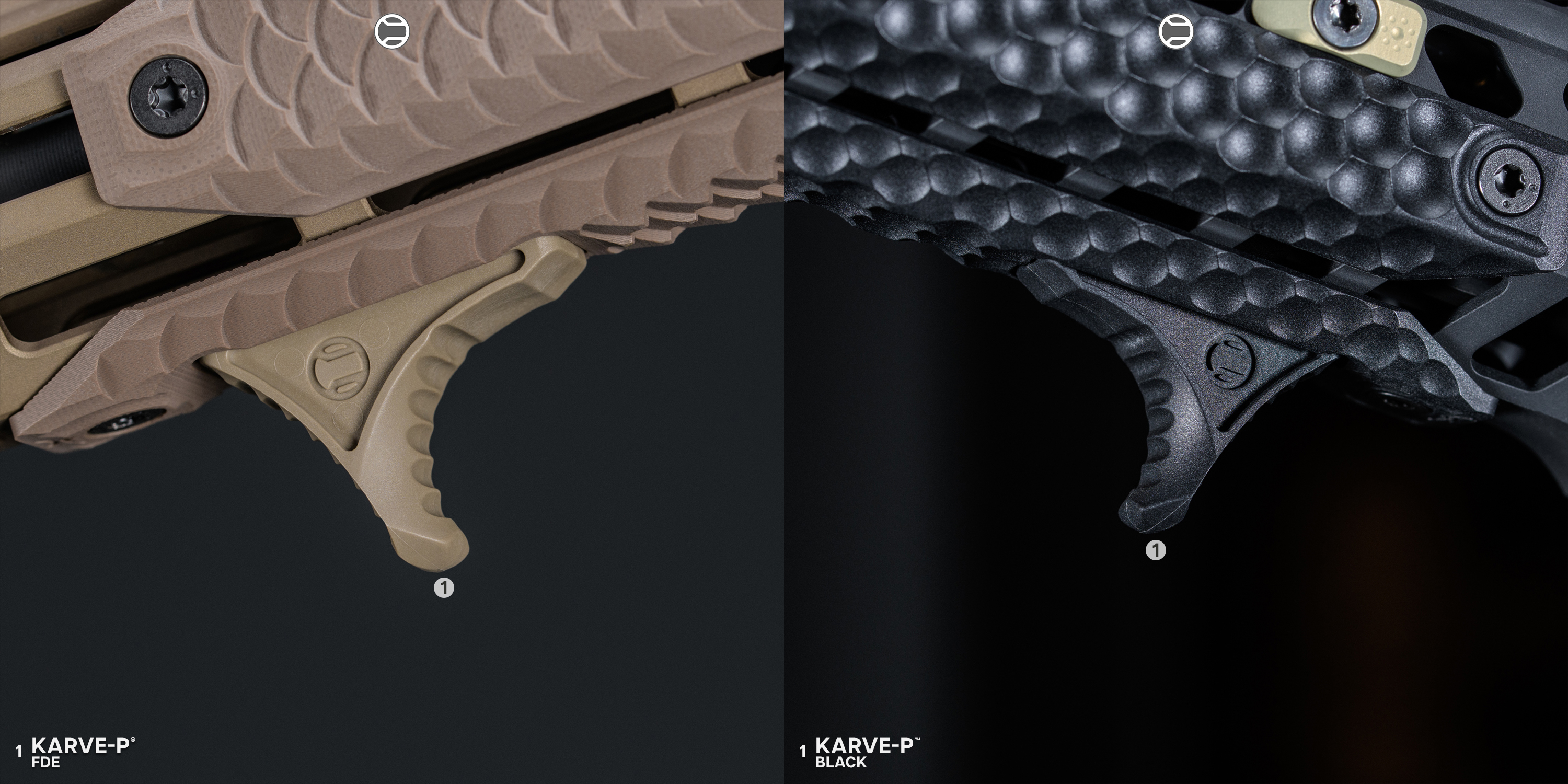
-
Karve-P™
Made from High Temp Polymer (HTP®), the Karve-P weighs next to nothing but still mounts securely to any M-LOK rail. Ideal for ultralight rifles, range toys, or minimalist builds.
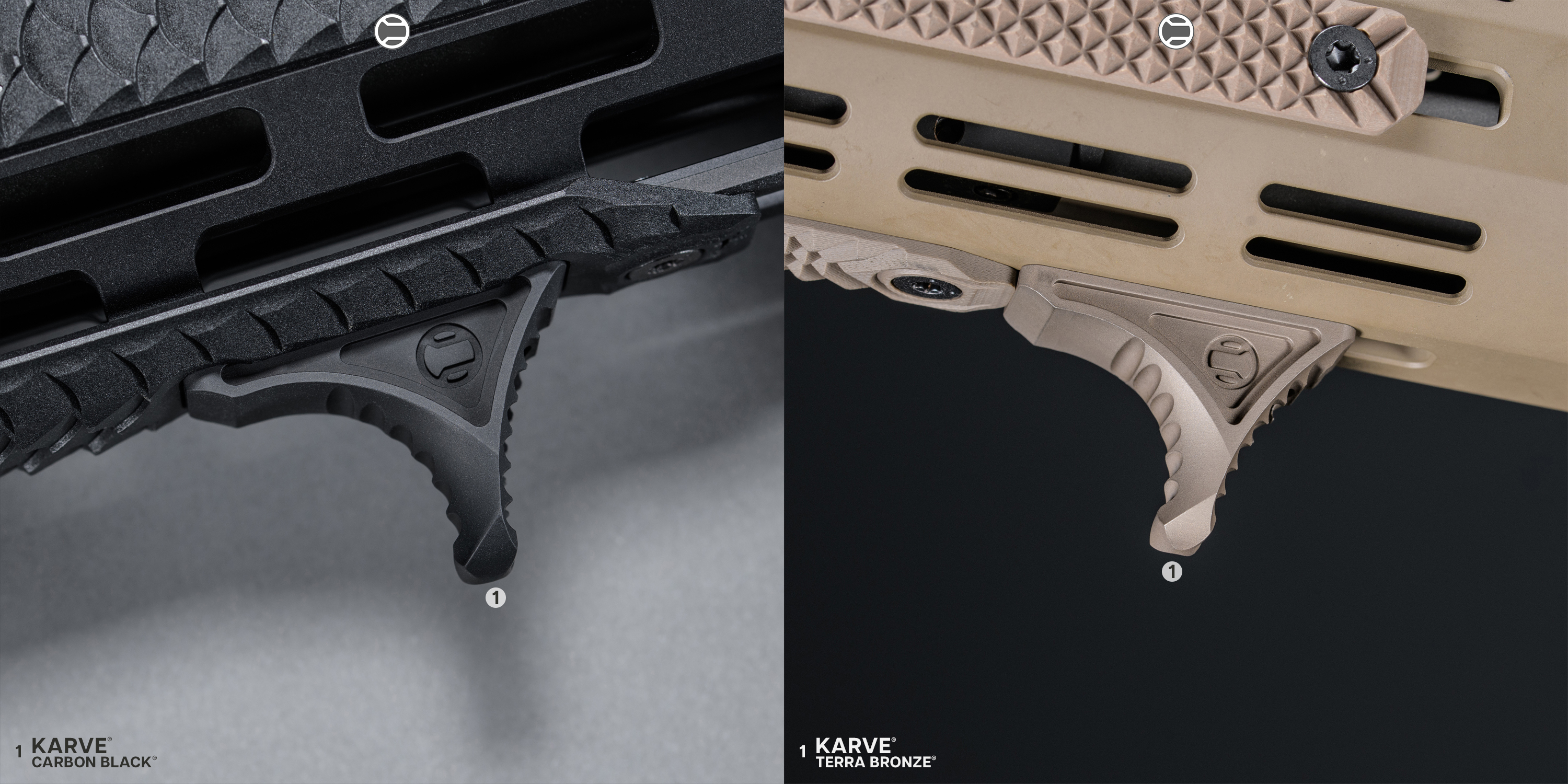
-
Karve® (Aluminum)
CNC machined from U.S.-made 6061 Aluminum, the original Karve provides a low-profile indexing point for maximum control and durability.
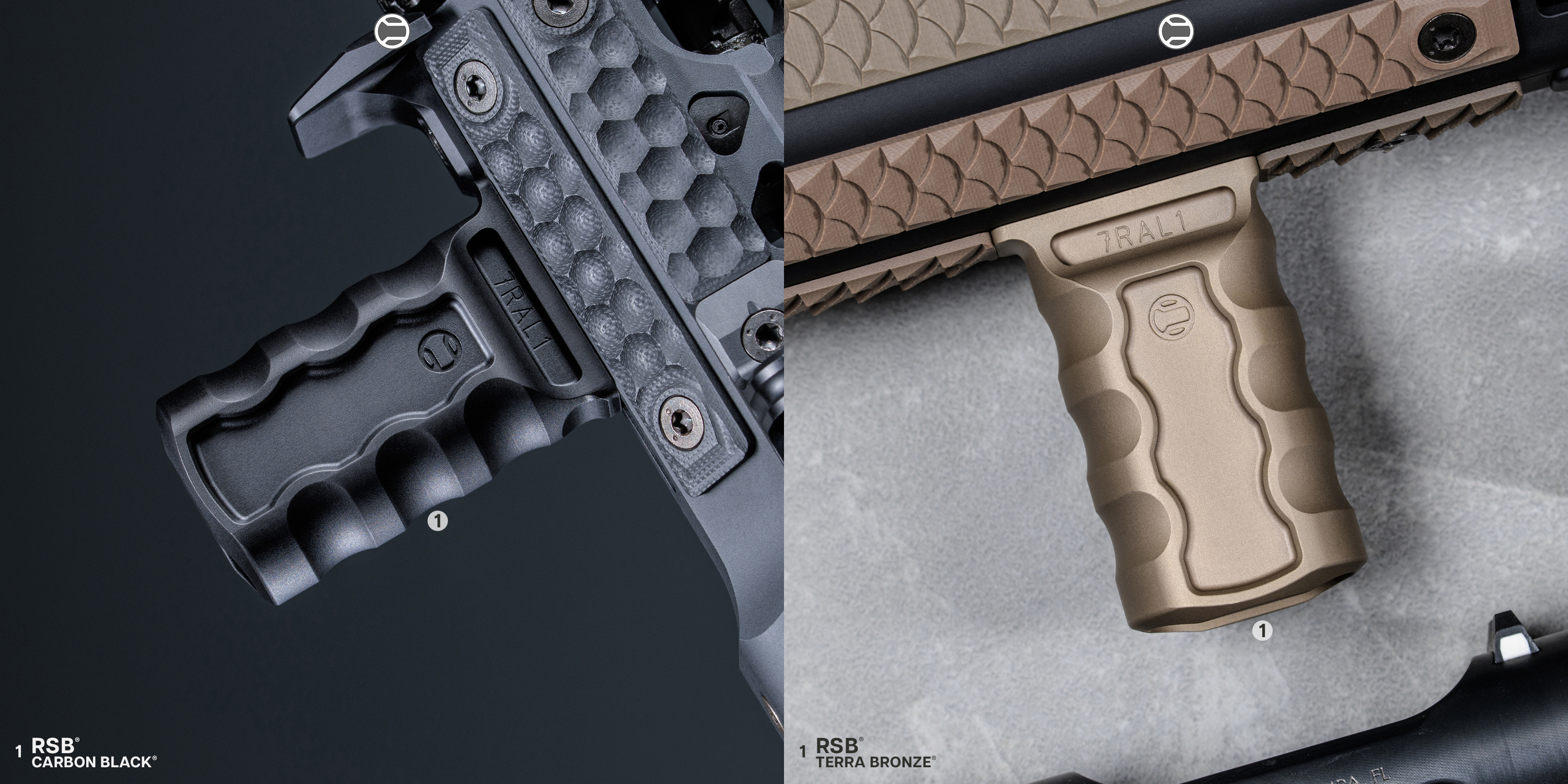
-
RSB® Stubby Grip
Machined from aluminum and now also offered in a polymer variant, the RSBM-P, the RSB gives you compact vertical control in a snag-free form factor. Especially good for those running suppressors or carbines with tight rail real estate.

-
HTP® XOS-H® Panels
The same great grip and modularity of the G10 XOS-H—but built in rugged High Temp Polymer for affordability and weight-conscious shooters.
Whether you’re siding with aluminum for max reliability or experimenting with polymer to lighten your loadout, RailScales offers options tailored to every build philosophy. From modern M-LOK accessories to timeless grip solutions, we manufacture parts that fit your rifle and your mission—without compromise.
Built for shooters. Trusted by professionals. Always American made.
Disclaimer:
This blog content was generated by a human and with the aid of artificial intelligence. It may contain errors or inaccuracies and should not be relied upon as a substitute for professional advice. This content is for SEO/entertainment purposes only and the views expressed in this content does not necessarily reflect the views of RailScales LLC. For more information, please refer to bullet point #13 on our FAQ.

